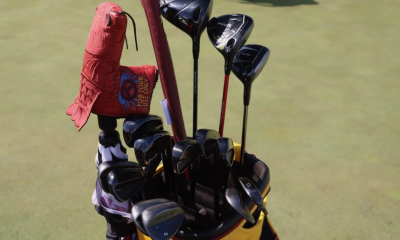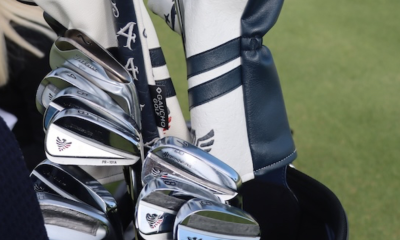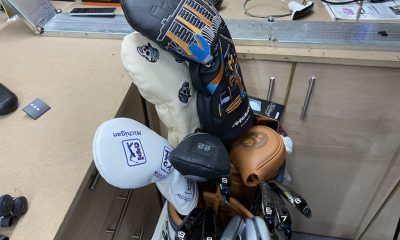19th Hole
A hacker plays the big ones: Pt. 2

“A Hacker Plays The Big Ones” is a short story authored by Steven R. Roberts. The short story, written two months following the trip, tells the tale of Roberts and his friend, Bob Blackman’s, golf odyssey around Scotland in the 1970s where the two played four of most historic courses in the game: St. Andrews, Carnoustie, Muirfield and Gleneagles.
We have broken the short story into a four-parter and will publish Part 3. of the story in the coming days.
The next day we played 36 holes on the Gleneagles King’s and Queen’s courses. I’m writing this in my hotel room while Bob takes a bath. It would certainly be too bad if he drowned, but I don’t want to come across as a bitter loser. It’s just that he had a brilliant 74 at the difficult King’s course this morning followed by a steady 78 at the Queen’s this afternoon.
It’s a bit hard to appreciate the beauty of this place with tears in your eyes, but I must say it is spectacular. The two courses are set in the rolling Scottish hills, and the clubhouse inside and out is impressive.
Toward the end of the second round, I must admit I was knackered from climbing the hills and extricating my ball and myself from the deep traps. We’re both suddenly glad we didn’t wait 20 more years to make this trip. The names of the holes give an extra touch to the place. Wee Bogle, Canty Lye, Devil’s Creel, Waup’s Nest and Blink Bonnie are indications of the dangers of the King’s course.
The turf and overall course manicure at Gleneagles was a pleasant surprise in that the conditions were similar to the finest U.S. courses. This contrasts with yesterday’s seaside links course of Carnoustie, with its relatively flat fairways and hard greens. On the other hand, I didn’t come all this way to play a U.S. course. Not to worry, because both courses have a very different growth called “heather” in their roughs. If you are lucky enough to find your ball in this wiry stuff, we found that you needed to blast out sideways to recover. It was like trying to hit a shot out of barbed wire.
One of the other distinguishing characteristics of UK golf is the speed of play. They play a get-up-and-hit style that I found exhausting at first when we moved to England but by this time I had found it refreshing. Bob and I played Carnoustie in three hours yesterday and, excluding a one-hour break for lunch, we played 36 holes in six hours today. To add to the physical challenges of the game, these three-hour rounds are done walking and carrying our bags. There were no golf carts on the island and very few caddies.
I already mentioned Bob’s two scores for the day, and purposely didn’t mention mine. Bob is left-handed, and he has a wooden-shafted putter. If that isn’t bad enough, he knocked in everything in sight for his 74 while I three-putted three times for an 80 on the King’s and 79 on the afternoon round on the Queen’s course.
I’m now 8 shots back of Bob, who’s 20 shots behind Tom Watson’s winning pace. The good news is that I didn’t jump off the Perth Queen’s bridge as we strolled over the Tay River for dinner. What am I saying? I’m having the time of my life and tomorrow we play St. Andrews. I just need rest. I briefly considered a plan to break Bob’s wooden-shafted putter over his sandy-haired head the next day.
That night I couldn’t sleep. Finally, I got up and walked across the room to Bob’s bag, which was propped in the corner next to his bed. I carefully removed the wooden-shafted devil and took it out into the hall. I laid down a glass from the bathroom and stroked a few putts.
The putter was left-handed, so I had to stroke the putts from the wrong side. I put the first three balls in the glass and backed up so that I was putting from the door of the room next to ours to our room door. The carpet had a slight break left to right, but I made two out of three 12-footers. This really feels good in my hands. No wonder Bob is beating me.
I backed up to another doorway and made two out of three 25-footers. Now the carpet was breaking just over a foot. Backing up again, this will be the ultimate test as to whether this thing is illegal and I should confiscate it.
I’m stroking the first 50-footer when an older lady in her white nightgown comes out of one of the rooms along the putting path. I’ve got my head down, concentrating on making a smooth stroke; I got a chill up my neck realizing the ball was on pace and line perfectly toward the hole. I looked up to see the lady rubbing her eyes as she stepped on the ball and sprawled out across the hallway. Her nightgown billowed like a small parachute as she screamed and fell to the slightly-slanted hallway carpeting.
“Oh, ma’am, I’m so sorry,” I said, hurrying to her side.
“I heard a scream and opened my door to find this man standing over this poor woman,” the man from the other side of the hall said to the constable. “He was standing there with a red face in his whitey tidy undershorts and a club in his hand. My friend next door and I blocked his attempts to get to his room until you got here, constable.”
Bob had heard the commotion in the hall, and he’d brought my trousers out to me, but it was too late.
So, that’s how the day I had looked forward to for so long. The day I was scheduled to play St. Andrews started out with breakfast in the Perth city jail.
“How you doing?” Bob asked, coming to the visitor’s room about 8:30 that morning.
“Oh, God, Bob, it’s lucky we got a later tee time,” I said. “Can you get me out in time?”
“I’ll see. I suppose you have some explanation as to what you were doing walking the halls in your skivvies with my putter at 3:20 in the morning?” Bob asked.
“Never mind that right now,” I said. “We can talk about it on the long drive home in a couple of days.”
“Well, I don’t know what happened with that woman or my putter, but I’ve called St. Andrews and changed our reservation for tonight to separate bedrooms.”
“You didn’t.”
“Yes. Besides, you snore.”
“Whatever. Just get me out of here in time to hit a few practice balls, and I’ll be okay.”
“I’m meeting with the constable in 10 minutes,” Bob said. “Let’s hope I can convince him you were doing something rational out there in that hallway. Do you have any words to help me make him understand?”
“No.”
Two hours later, Bob was driving as we turned off the main street in St. Andrews onto narrow Links Avenue. I put on my golf shoes as Bob drove past the Old Niblick Restaurant and pulled into the small parking lot 12 minutes before our tee time of 1:33 pm.
Coming soon: A Hacker Plays The Big Ones Pt. 3
- LIKE5
- LEGIT2
- WOW0
- LOL0
- IDHT0
- FLOP0
- OB0
- SHANK0
19th Hole
Butch Harmon reveals what he worked on with Rory McIlroy during visit earlier this year

While speaking on the “Son of a Butch” Podcast, legendary swing coach Butch Harmon revealed what he worked on with Rory McIlroy when the four-time major champion went to visit him after the Players Championship this season.
Butch Harmon on what he worked on with Rory:
“The work I did with him wasn’t a tremendous amount of changing what he did, it was his attitude and the way he played certain shots. From 150 yards and in he made a full swing like he was hitting a driver and I wanted him to make…
— Matt Vincenzi (@MattVincenziPGA) May 15, 2024
“The work I did with him wasn’t a tremendous amount of changing what he did, it was his attitude and the way he played certain shots. From 150 yards and in he made a full swing like he was hitting a driver and I wanted him to make more 3 quarter swings and chop the follow through off a little. He’s a very high ball hitter, but with short irons high balls aren’t good, it’s hard to control, we wanted to bring the ball flight down.”
The work certainly seemed to help McIlroy, as he went on to win the Zurich Classic alongside Shane Lowry and the Wells Fargo Championship at Quail Hollow in back-to-back starts.
Rory will now tee it up at Valhalla for the PGA Championship, which is the site of his most recent major victory in 2014.
More from the 19th Hole
- Phil Mickelson drops big retirement hint; Says LIV will grow the game “on a much more global basis”
- 2-time major champ announces shock retirement from the sport at age of 33
- Tiger explains why golf has “negative connotations” for daughter Sam
New here?
- LIKE9
- LEGIT2
- WOW0
- LOL0
- IDHT0
- FLOP0
- OB0
- SHANK2
19th Hole
Brandel Chamblee says this technological development was key to Phil Mickelson winning major championships

While speaking with GolfWRX, Golf Channel’s Brandel Chamblee shared that he believes the solid core golf ball helped Phil Mickelson win major championships.
“One of the consequences of the solid core golf ball coming around was it put the straightest of hitters in the rough.
“Phil started winning majors in 2004, I don’t think that’s any coincidence. I think he started winning majors after the solid core golf ball came along and put everybody in the rough.
“And so [Phil] is like ‘I got you in the rough, I’m going to kick your a**. This is my game. I’ve been in the rough my whole career. I can go over trees, through trees, around trees.’
“Because he’s got that amazing creativity and Phil is an underrated iron player, phenomenal iron player. Great, great great out of the trouble. If you put the top-40 players on a list and ranked them in terms of accuracy, he would be 40th.
“So, I think that was one of the consequences of the solid core golf balls was it allowed Phil to win major championships.”
Mickelson went on to win the Masters in 2004 as well as five additional majors from 2004-2021 including three total Masters, two PGA Championships, and an Open Championship.
Check out the full interview with Chamblee below:
More from the 19th Hole
- Phil Mickelson drops big retirement hint; Says LIV will grow the game “on a much more global basis”
- 2-time major champ announces shock retirement from the sport at age of 33
- Tiger explains why golf has “negative connotations” for daughter Sam
New here?
- LIKE7
- LEGIT4
- WOW2
- LOL1
- IDHT0
- FLOP3
- OB1
- SHANK14
19th Hole
Former Augusta National employee pleads guilty to transporting stolen Masters memorabilia; Arnold Palmer’s green jacket among stolen items

The document was filed in the U.S. District Court for the Northern District of Illinois.
Since then, more details have emerged about the case.
According to Darren Rovell of Cllct, one of the items that was stolen was Arnold Palmer’s green jacket.
The Chicago Tribune also reported that Globensky was able to steal the merchandise due to his role as a former warehouse coordinator at Augusta National who oversaw the Masters merchandise that was sold.
Rovell states that “A source with intimate knowledge of the case said an Augusta National member, who knew the jacket was missing, contacted a well-known collector who had gained a reputation for tracking down rare items. The member’s goal was to return the jacket to Augusta under the guise of purchasing it in a private sale.”
The plan worked, and the man agreed to sell the jacket for an agreed upon price of $3.6 million. After the sale was complete, the FBI swarmed the house of the thief.
Cllct also reported that Globensky pled guilty in a federal court in Chicago on Wednesday and now faces up to 10 years in prison.
The Chicago Tribune adds that Globensky’s plea deal includes an agreement to provide the government a cashier’s check for $1.5 million in the next few days.
More from the 19th Hole
- Phil Mickelson drops big retirement hint; Says LIV will grow the game “on a much more global basis”
- 2-time major champ announces shock retirement from the sport at age of 33
- Tiger explains why golf has “negative connotations” for daughter Sam
New here?
- LIKE1
- LEGIT0
- WOW1
- LOL1
- IDHT0
- FLOP0
- OB0
- SHANK1
-
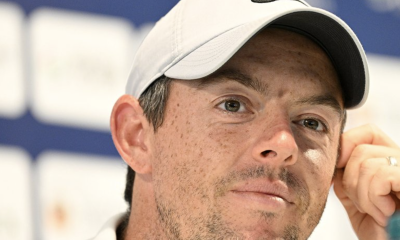
 19th Hole4 days ago
19th Hole4 days agoBrandel Chamblee says this is the primary reason why Rory McIlroy hasn’t won a major in 10 years
-
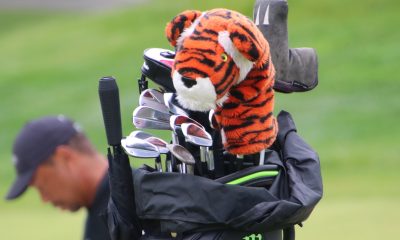
 Whats in the Bag5 days ago
Whats in the Bag5 days agoTiger Woods WITB 2024 (May)
-

 19th Hole2 weeks ago
19th Hole2 weeks agoReport: LIV star turns down PGA Championship invite due to ‘personal commitments’
-

 19th Hole3 weeks ago
19th Hole3 weeks agoGary Player claims this is what ‘completely ruined’ Tiger Woods’ career
-

 Equipment2 weeks ago
Equipment2 weeks agoDetails on Justin Thomas’ driver switch at the Wells Fargo Championship
-
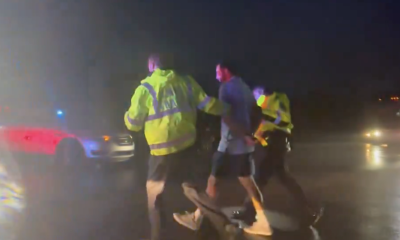
 News2 days ago
News2 days agoScottie Scheffler arrested, charged, and released after traffic incident at Valhalla
-

 Whats in the Bag3 weeks ago
Whats in the Bag3 weeks agoTeam McIlowry (Rory McIlroy, Shane Lowry) winning WITBs: 2024 Zurich Classic
-

 Whats in the Bag2 weeks ago
Whats in the Bag2 weeks agoKeegan Bradley WITB 2024 (May)














